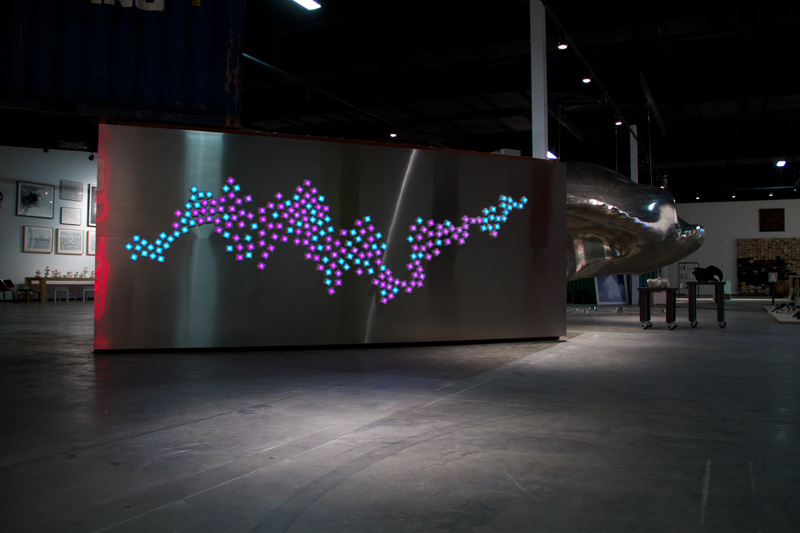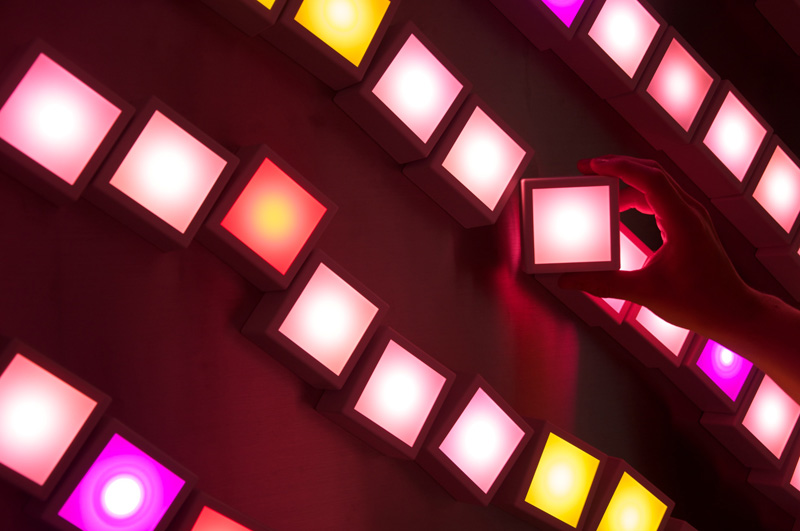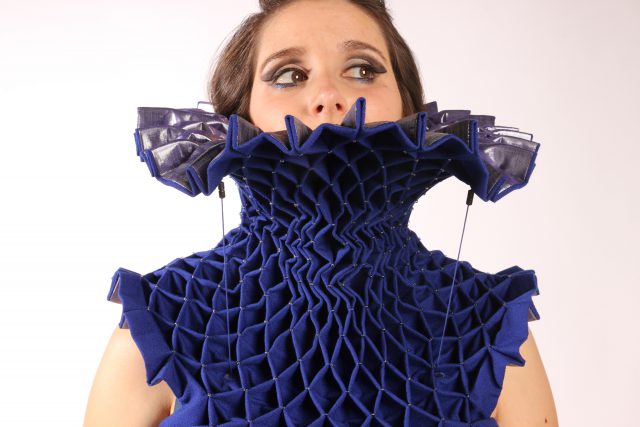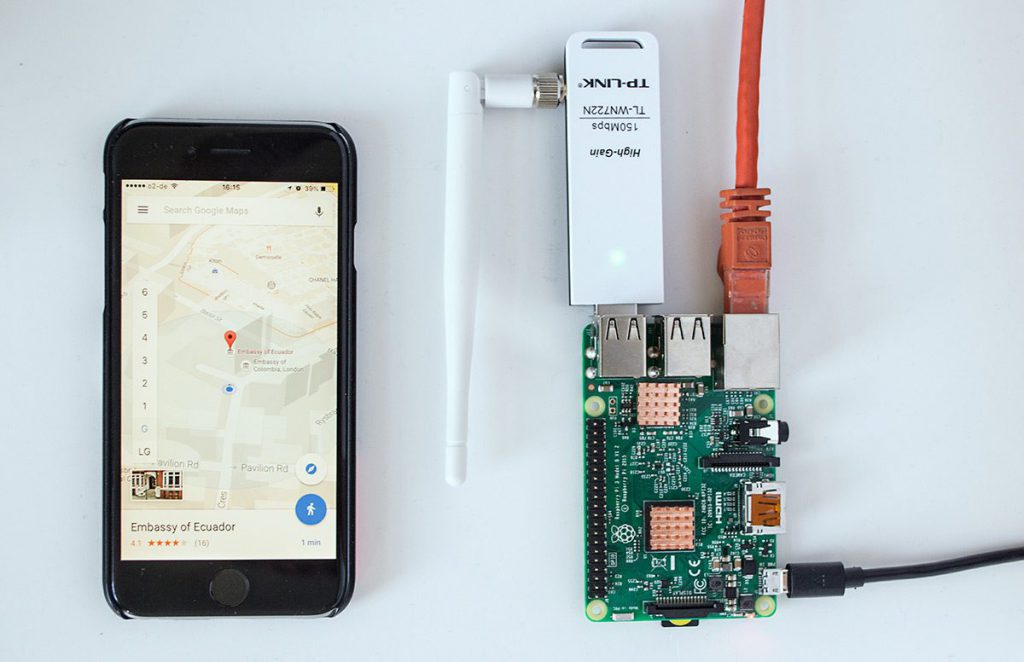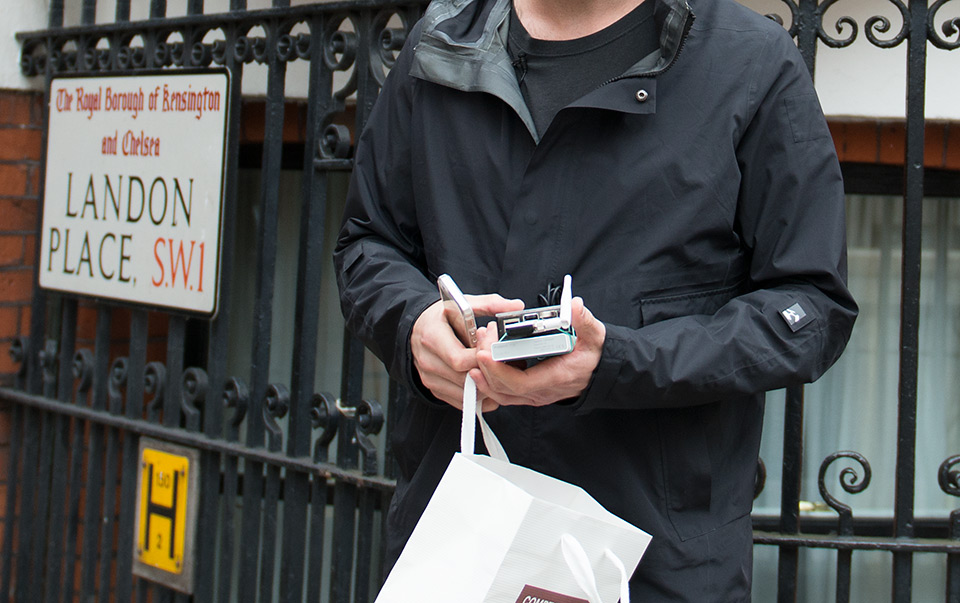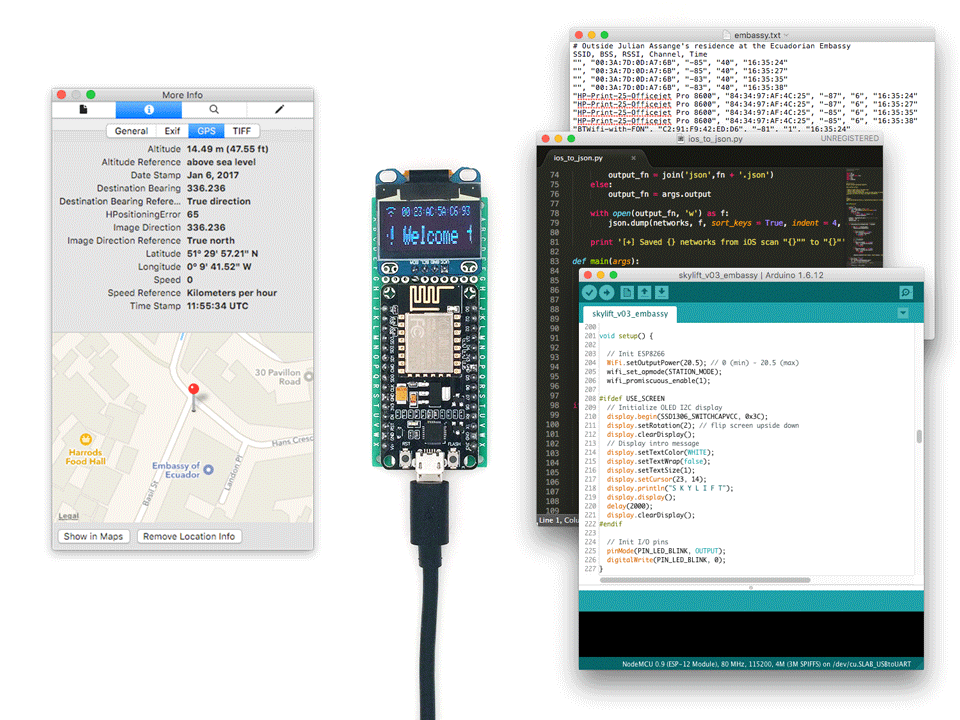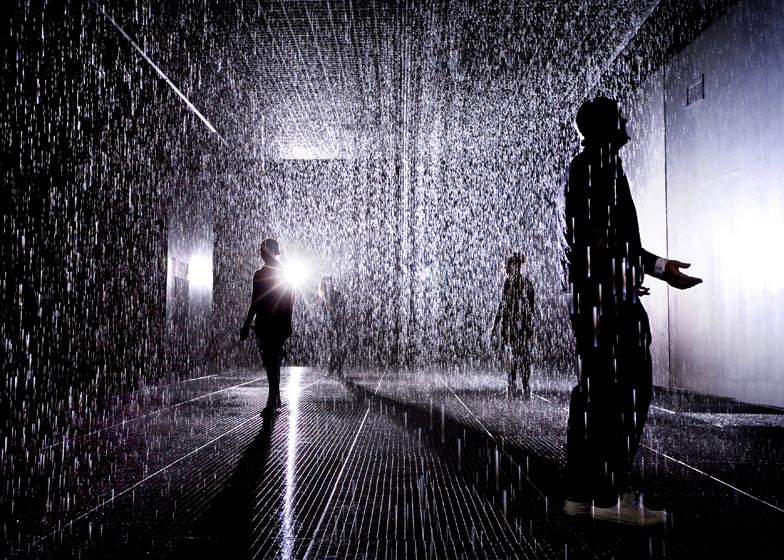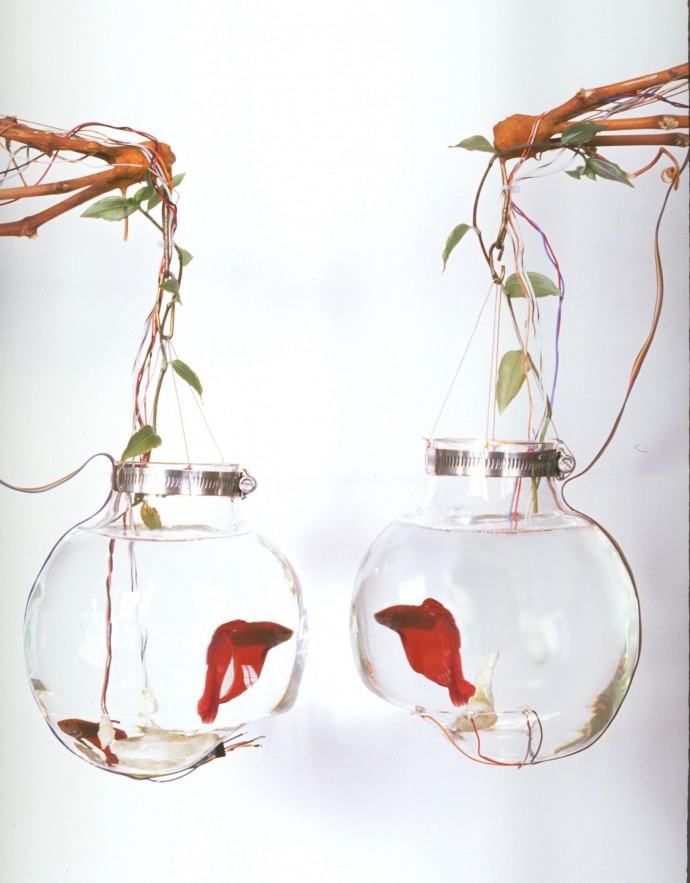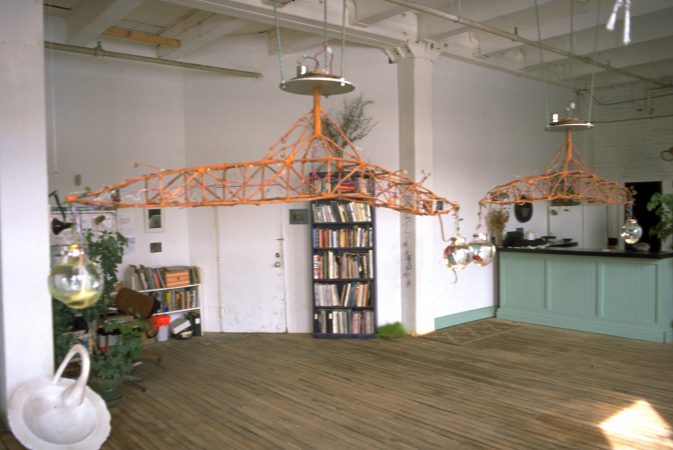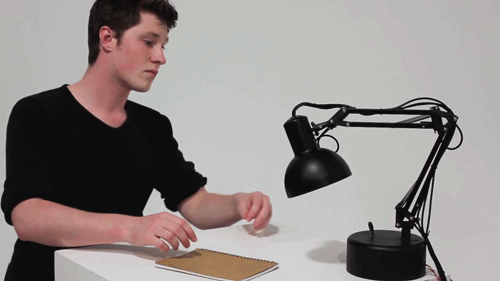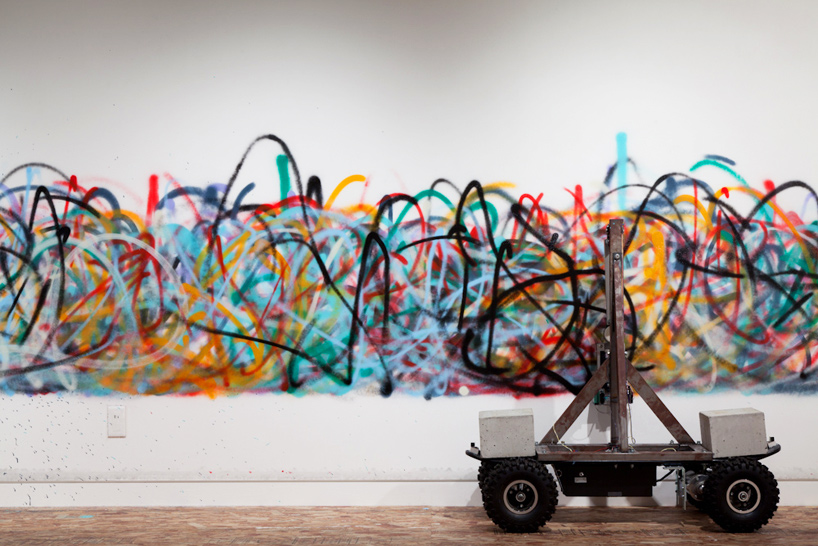
Senseless Drawing Bot by So Kanno and Takahiro Yamaguchi
Senseless Drawing Bot is a robot that features a four wheel base driven with motors and then a double pendulum attached to the base with a can of spraypaint mounted to the end of the double pendulum. The inertia acting on the arm causes the paint to be released from the spraypaint can in abstract patterns somewhat reminiscent of graffiti art. To accentuate the erratic movement of the spraypaint can, there is a rotary encoder at the fulcrum of the pendulum that allows the movement of the robot's base to accentuate the movement of the arms.
The robot's movement is particularly interesting because of how out of control it looks. Despite this appearance, the robot is very much under control. Its movements are programmed such that it can create a maximum amount of movement in the arm. The robot controls its movement to simulate being very out of control. It plays with motion to raise questions about how much control the artist has over their art, and how much that control matters in the art that's being produced.
The piece definitely draws influence from abstract graffiti, looking at the street art somewhat for its form, but also for the process of vandalism. Vandalism, like the arm of the robot itself, suggest a lack of control in an environment with lots of control (the purposeful designs of man-made urban structures that often fall victim to vandalism).
